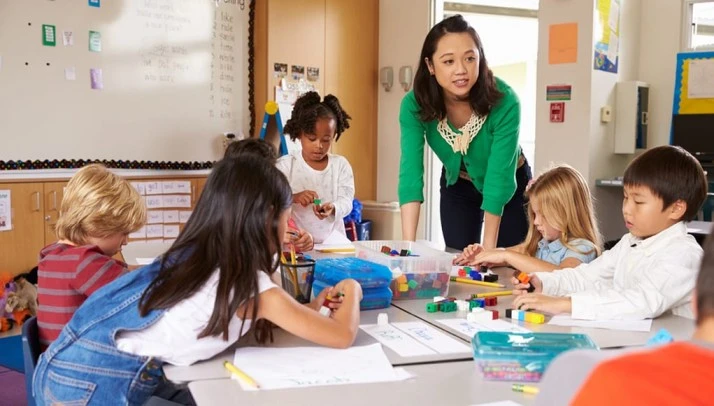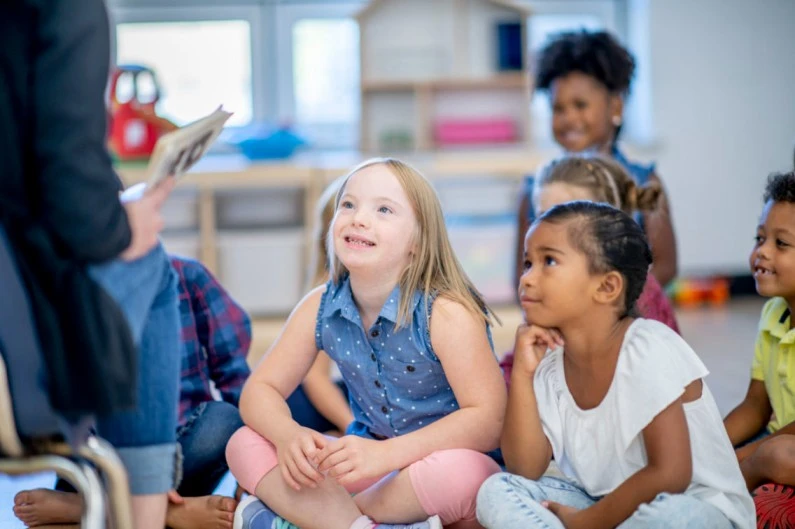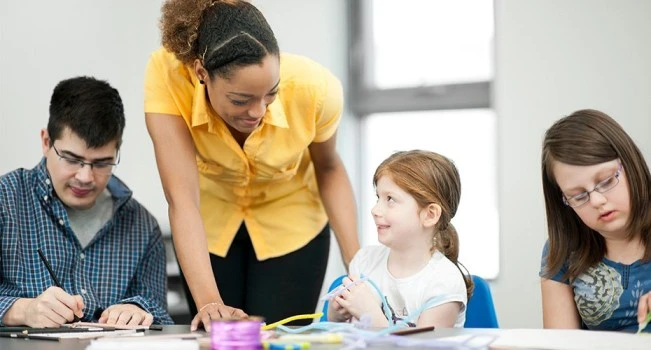Contents
Discover practical strategies for managing school transitions and ensuring a smooth school experience for children with special needs. Gain valuable insights that can make a significant impact on their educational journey, improve support and understanding, and enhance their overall well-being. In the following lines, you will:
- Gain Practical Strategies: Learn valuable strategies that will help you effectively manage transitions and ensure a smooth school experience for children with special needs. These practical tips can make a significant impact on their educational journey.
- Improve Support and Understanding: Enhance your ability to support and understand children with special needs. By implementing these strategies, you can create a more inclusive and nurturing environment, fostering their growth and success.
- Enhance Student Well-being: By implementing the suggested strategies, you can contribute to the overall well-being of children with special needs. This post will provide insights into creating a positive and supportive school experience, leading to improved academic performance and emotional development.
Enhance Your Transition Strategies with ‘Classroom Transition Strategies!’ Video
As a special bonus, we have discovered an informative video titled “Classroom Transition Strategies!” by Teachings in Education. This video provides valuable insights and practical demonstrations of effective classroom transition strategies. It perfectly complements the content discussed in this article and offers additional visual guidance for managing transitions in the classroom setting.
We believe this valuable resource will enhance your understanding and implementation of successful transition techniques, ultimately leading to a smoother school experience for children with special needs. Enjoy the video and deepen your knowledge in managing transitions effectively!
Within the realm of school transitions, numerous parents, educators, and caregivers encounter challenges when it comes to effectively managing these transitions for children with special needs. The process of navigating these transitions smoothly can often become overwhelming, exerting a negative influence on the child’s overall educational experience.
Such difficulties can give rise to a range of consequences, including heightened stress and anxiety for both the child and those involved in their support system. Mismanaged transitions can disrupt the learning process, impede social interactions, and hinder the child’s academic progress as a whole, thereby inhibiting their true potential within the realm of school transitions.
This blog post will provide valuable insights and strategies to help you effectively manage transitions, ensuring a smooth school experience for children with special needs. By reading this post, you will gain:
- Practical Transition Management Strategies: Discover proven strategies and techniques to navigate transitions smoothly, from transitioning between classes to changes in school routines. These practical tips will empower you to create a supportive environment for the child’s success.
- Improved Understanding and Support: Enhance your knowledge and understanding of the unique needs of children with special needs during transitions. You will gain insights into their emotional and sensory experiences, allowing you to provide better support and tailored interventions.
- Promote Inclusion and Well-being: Learn how to foster an inclusive school environment that promotes the well-being of all students, including those with special needs. By implementing the strategies outlined in this post, you can contribute to their overall growth, happiness, and educational achievements.
This blog post will equip you with effective strategies, enhance your understanding, and empower you to create a supportive and inclusive school experience for children with special needs, ensuring smooth transitions and maximizing their educational journey.
Transition Management Strategies for a Smooth School Experience

Understanding Transitions for Children with Special Needs
- School transitions can pose challenges for children with special needs, particularly due to their difficulty in adapting to changes in routine and unfamiliar environments.
- To mitigate these challenges, creating a visual schedule that outlines daily activities and upcoming transitions becomes a valuable tool for children with special needs. This enables them to anticipate and prepare for changes during school transitions.
- Establishing clear communication channels between parents, educators, and support staff is of utmost importance in ensuring consistent support for children during school transitions. Effective communication enhances collaboration and enables a cohesive approach in assisting children throughout these transitions.
- Incorporating sensory accommodations, such as providing a quiet space or sensory tools, can significantly aid children with sensory sensitivities in navigating school transitions more comfortably. These accommodations create a supportive environment that addresses their specific sensory needs.
- Additionally, offering social stories or social scripts that explain upcoming school transitions can be highly beneficial. These resources help children understand what to expect, reducing anxiety and facilitating a smoother transition experience for them.
Creating an Inclusive Transition Environment

Collaborative Support and Individualized Plans
- By collaborating with parents, teachers, and therapists, a tailored and inclusive approach can be ensured through the development of individualized transition plans based on the unique needs of children during school transitions.
- Consistently implementing transition strategies across various settings, including classrooms, playgrounds, and transportation, fosters a seamless and inclusive experience for children navigating through these transitions.
- Encouraging peer support and fostering understanding among classmates plays a vital role in creating a supportive and inclusive environment during school transitions.
- Improving the ability of school staff and educators to provide appropriate support during transitions is achievable through training that focuses on understanding and meeting the specific needs of children with special needs.
- Regularly evaluating and adjusting transition plans based on the child’s progress and feedback ensures continuous improvement and contributes to a positive and successful experience during school transitions.
Promoting Emotional Well-being and Resilience

Emotional Support and Self-regulation Techniques
- Teaching children self-regulation techniques, such as deep breathing exercises or mindfulness activities, plays a crucial role in helping them manage stress and anxiety during school transitions.
- Providing emotional support through open communication, active listening, and validation of their feelings is essential in ensuring that children feel understood and supported throughout the transition process.
- Incorporating transition-related social skills training, such as turn-taking or following instructions, greatly enhances the child’s confidence and independence during school transitions.
- Encouraging the development of a positive support network, comprising peers, teachers, and family members, fosters resilience and promotes emotional well-being as children navigate through various school transitions.
- Lastly, recognizing and celebrating the achievements and milestones reached during these transitions serves as a powerful tool in boosting the child’s self-esteem and motivation.
By following these strategies, you can create a smooth and inclusive school experience for children with special needs, allowing them to thrive academically, socially, and emotionally.

In conclusion, this post has highlighted key strategies for managing transitions and ensuring a smooth school experience for children with special needs. Let’s recap the main points:
- Firstly, understanding the unique challenges faced by children with special needs during transitions is essential. Creating visual schedules, establishing clear communication channels, and providing sensory accommodations can greatly support their transition process.
- Secondly, fostering an inclusive transition environment involves collaborative support and individualized plans. By collaborating with parents, teachers, and therapists, implementing strategies consistently, promoting peer support, and providing appropriate training, an inclusive and supportive environment can be created.
- Lastly, promoting emotional well-being and resilience is crucial during transitions. Teaching self-regulation techniques, offering emotional support, incorporating social skills training, and nurturing a positive support network can contribute to the child’s emotional well-being and success.
By the conclusion of this post, you will have gained a deep understanding of the significance of implementing practical transition management strategies, fostering an inclusive environment, and addressing the emotional needs of children with special needs during school transitions. Armed with these insights, readers can make a profound impact on ensuring a smooth and positive school experience, allowing children with special needs to flourish academically, socially, and emotionally. Let us now embark on a transformative journey of empowered transition management, paving the way for exceptional educational experiences for all children, especially during school transitions.
As you continue on your journey to support children with special needs during transitions, we highly recommend checking out an insightful article titled “Ten Tips to Smooth Transitions” on The Educators Room. This article provides practical steps and additional guidance that complement the strategies discussed in this post. By incorporating these tips into your transition management approach, you can further enhance the smoothness and effectiveness of transitions for children with special needs.
As you wrap up your exploration of managing transitions for children with special needs, we invite you to delve into another valuable resource on our blog: “Social Skills Development: 03 Ways to Empower Children with Special Needs.“ This article focuses on empowering children with special needs through the development of essential social skills. You can gain insights and practical strategies to further support their social growth and enhance their overall well-being. We encourage you to continue your journey of knowledge and empowerment as you strive to create inclusive and nurturing environments for these remarkable children.